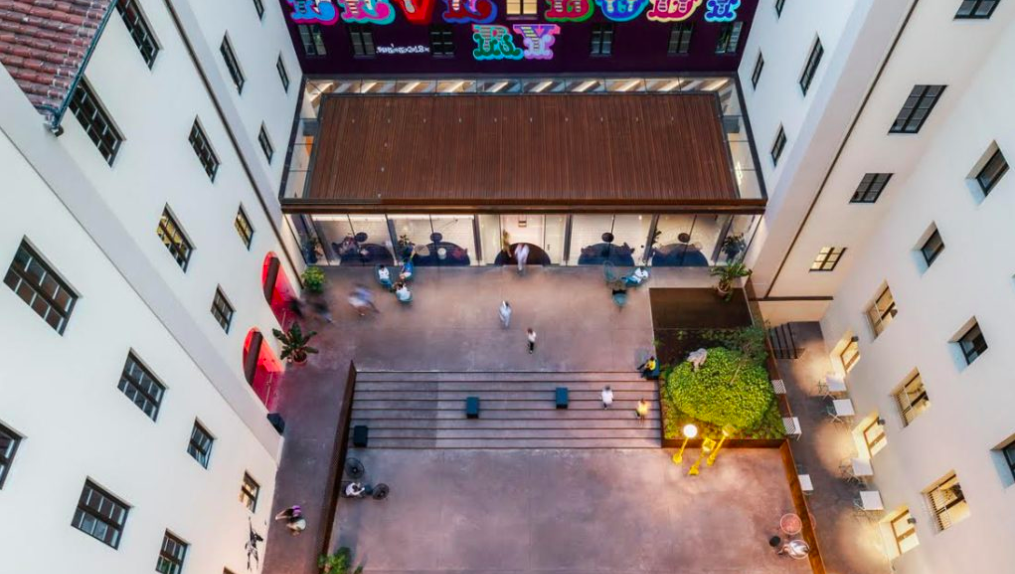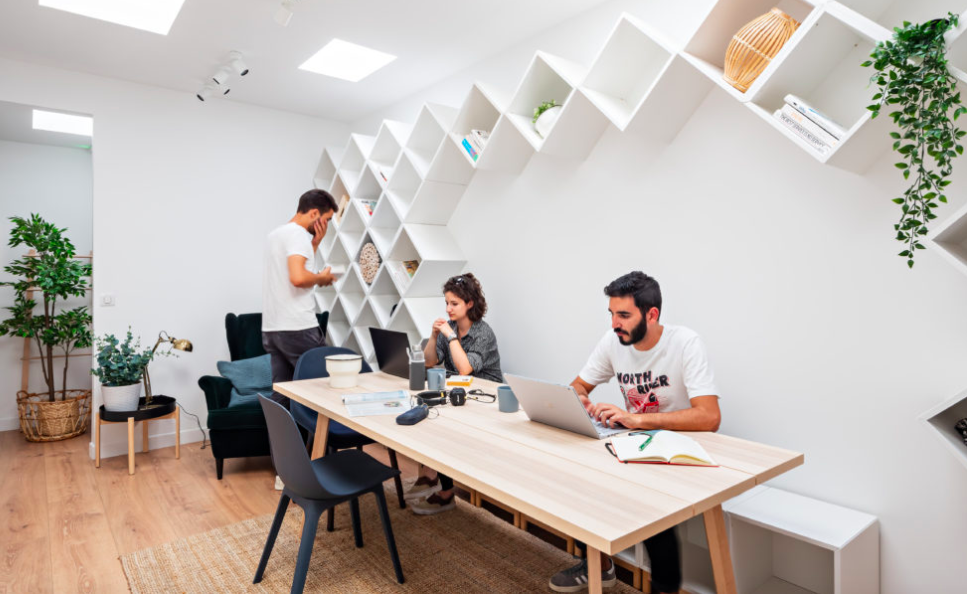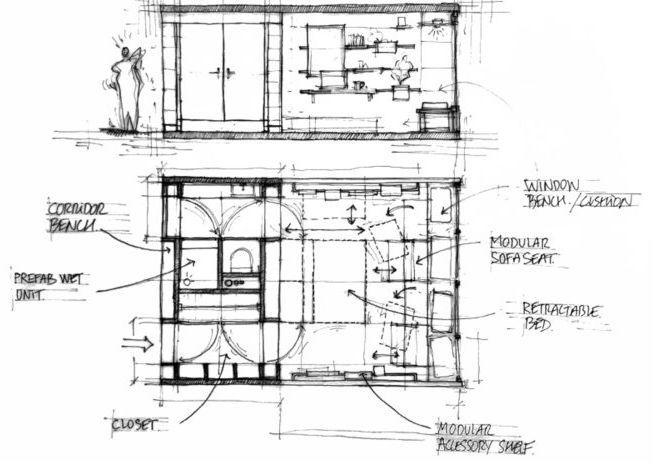These are very challenging times for coliving design and coliving architecture, as well as design and architecture for shared spaces in general. In the past months we have all seen the world change dramatically. In this article Tom Manwell shared the highlights from a conversation with 4 professionally managed shared living experts.
What used to be considered normal social activities have now been banned due to lock-down. A Large proportion of the world’s population has been consigned to their homes, whether they be houses, apartments or shared living spaces.
Sleeping, eating and working in the same space, greatly reduced social interaction and limited access to the outside world have become the ‘new normal’.
2020 has been a year with unprecedented challenges, and so it will be 2021. How do we want to BE? How do we wish to move forward? We have explored these questions in our recent guide about coliving in 2022 and beyond.
As we begin to live in this ‘new normal’ many in our societies both young and old are finding themselves physically isolated and missing human connection with their friends and families.
Societies are waking up like never before to the need for human connection and community in order to live fulfilled and happy lives – a much needed global co-creation where coliving design and design of shared spaces for wellbeing needs to play an important role.
Although many European countries have now hit the peak of cases and are beginning to re-open some parts of their society, a return to business-as-usual is likely to be out of the question until governments strategise how to best manage the virus. Additionally there is always the possibility of another virus in the future which could have similar impacts. As it is quite likely this is not a temporary blip, COVID 19 will have implications on the design of coliving spaces.
So what are these implications?
Implications from the pandemic on shared living
We asked 4 experts in coliving design and shared spaces design to give us their thoughts. We show their responses here as well as our own thoughts on the issue below.
Contributors on this coliving design article
1. What integral design benefits does coliving as a typology have which enable it to meet the challenges of covid 19?
The Student Hotel: What we have seen so far is it’s not only the space that is beneficial but the entire co-living experience. The combination of open spaces, visual connection with others and all the services you need under one roof making dealing with this crisis less challenging. Most of our restaurants needed to close to the public but remained open to serve our guests albeit via take-out. Our gym had to close, but we were still able to host virtual work-outs and mindfulness clinics through our Connectors.
And you are not alone, even if you need to stay inside. Our TSH teams have been heroes maintaining a great experience for our guests under very challenging circumstances, for example we host a helpdesk for any issues from flights being cancelled to go home, to anxiety over the situation to what can I do to stave off boredom. The combination of spatial design and customer experience are what make co-living environments successful even during a crisis like COVID-19.
Colonies: Tenants living at Colonies can be as much on their own or as much part of a shared collective as you want and need – each tenant can choose as per their need and wish at any given time. The private independence as well as the shared ‘family’ spaces means you have the possibility to never be alone (as we have seen many people suffer from in the crisis), have the space to work from home and comfortably make video calls, to do your online sport or cooking class alone or together with others, along with enjoying the exterior space we love to provide in every location. We are giving more space to people who want to live in the city, shared exterior space to people who would otherwise be alone in smaller spaces, which is fantastic if the time we are spending at home will increase as an effect of COVID 19. Our current tenants have coped amazingly well during the crisis, being used to working remotely and having chosen to live in a community from the very start of moving in at Colonies.
Cutwork Studio: We’ve seen that in many coliving spaces, bedrooms are well suited and equipped for confinement and often have a desk or area conducive to work. It’s also typically easier to organize and coordinate with members – to tap into collective solidarity and cooperation to support one another with grocery runs and helping weather the storm.
2. What are the ways in which existing coliving spaces can adapt their design and architecture in the face of the virus in order to reduce transmission rates and maintain community?
Colonies: Our first spatial goal is to ensure that every tenant has comfortable workspaces with the options to work alone or in a group, indoor spaces as well as access to a shared exterior space. When working from home it is an amazing wellbeing factor to be able to go outside, or even to sit in your patio or garden to work, do sports or have an apéro.
To keep the community feeling the Colonies Brand team make fantastic online events of which cooking is our most popular event so far.
For this we need amazing internet connection and the space for all tenants to potentially gather in one place all together comfortably, and the spatial design needs to reflect this. Considering materiality we need to continue to provide extremely easy to clean surfaces and materials, in order to keep a very high standard of hygiene in our homes.
The Student Hotel: I think it’s hard nowadays to separate spatial design from the rest of the total experience of co-living. People choose to co-live for more than just the design. That said, the physical space design is significant when it comes to hygiene, safety and physical distancing. For example, scale and available space especially in communal areas, gyms, shared kitchens, etc. will be a premium because people can spread out while still being in visual proximity. At TSH, we have large communal spaces so we can maintain that community vibe even from a distance. Our motto for the design team these days is “making safe still fun”. And ping pong makes the best physical distancing game. Just make sure to clean your paddles afterwards.
Cutwork Studio: One really great trick we’ve seen is simply in repurposing the previously shared and common spaces. It of course really depends on the kind of coliving space and so many local conditions, but for example, you can dedicate a shelf or a specific common area for grocery delivery and collection by the residents, helping maintain social distancing and safety. It’s a bit more difficult to activate social exchange and maintain the community through the spatial design if certain features aren’t already present. However, transitioning to digital connection and drawing on the community’s knowledge and know-how can be incredibly powerful. For example, you can survey the space to see if there are any doctors, nurses, toga teachers, chefs, bar tenders, fitness coaches, etc who could then lead community webinars, share knowledge or facilitate virtual workshops / yoga sessions.
3. What are the ways in which coliving spaces can be designed now and moving forward in order to allow them to better cope with the virus and the potential need for testing, vaccination, physical distancing and self isolation amongst residents?
Cutwork Studio: For one, it is abundantly clear that private spaces need more versatility than many spaces had originally expected. People need to be able to sleep, eat, work, and even perform limited exercise routines all in one space!
We’ve developed lots of adaptive designs such as seamless folding tables and slide-out bed systems to unlock flexibility in small spaces, and we’ve already seen these designs can make all the difference.
Another key idea we have been designing into coliving spaces are social balcony areas extending from each room. In the right configuration along a facade, you can interact and even “share a beer” with your neighbors all at safe distances. Lastly, depending on if a vaccine for COVID is found or only found to be impossible, way-finding and markings throughout a space could be incredibly helpful to preserve social distancing and safety etiquette in the long run.
Colonies: At Colonies we strongly believe in making our homes the maximum size of a large family of maximum 10 to 12 people, and never compromising on this. All our designs are based on the human scale both in the private, semi-common and supercommon spaces. In our large projects we multiply our homes but never enlarge them or compromise on the ‘familiar scale’. Familiarity is an incredibly special word for us as it is highly interconnected with the way us humans perceive beauty and feel a sense of belonging. We keep learning from our tenants as we go along in the life of Colonies, and our spaces need to stay flexible enough to constantly adapt to any new need.
Student Hotel: We started a project, called the TSH Experience of the Future, just before the crisis hit and we quickly added new needs to the brief. How can we ensure a pandemic-proof experience by designing our spaces to keep our community engaged AND safe. We have remained open during the crisis so we are learning a lot from our guests and team members and what works and doesn’t in our current experience. Besides the obvious improvements of cleanable surfaces, materials, spacing, we see 3 main areas to address in future designs:
Self-isolation in a small room with little amenities can be difficult over a long period of time. We are looking at upgrades and extras if needed or requested like larger TVs, more lounging furniture, better desk chairs if seating for longer periods of time, boosting wifi or adding ethernet connections to increase bandwidth, cleaning kits so you can clean more regularly yourself, music instruments, and technology improvements that let you do more digitally like mobile key access, reserving laundry machines, booking virtual classes, and bike sharing.
During the crisis, virtual connection has been a big part of community staying together and enjoying the same programming we are known for but then via a screen. We have seen not only guests joining events hosted locally, but guests across our network on hotels in Europe are joining as well. We are spreading our BedTalks platform by hosting BedTalks from Home events with changemakers discussing what the “new normal” will look like for our communities.
Flexibility and modularity become increasingly important, not only in allowing guests flexibility with length of stay contracts due to travel bans and potential lockdowns, but also in the design of our spaces. Fixed furniture will be replaced more with loose elements to allow for spacing, ease of cleaning and replacement if needed. Modular spaces that can be a virtual yoga room by day and e-sport gaming pod by night, or a bedroom that is a private office at daytime and sleeping oasis by night. These are all experiences we are looking at going forward with our new and existing properties.
Summary for "Coliving Design in The Age of COVID-19"
The main demographic that uses coliving spaces, those in their 20s-40s is at the lower risk end of the spectrum in terms of risk of serious illness and death from Covid 19. Therefore the virus’s impact in the area of coliving spatial design is as much to do with a space’s ability to adapt to the changing needs of users due to home working, physical distancing and self isolating rules as in virus prevention measures. It is clear from the answers given and our own research into the matter that coliving has many integral benefits which makes it well suited to adapting to these challenges, and appropiate coliving design canenable this.
Some of the inherent benefits of coliving as a typology in allowing it to adapt to the design and architecture challenges of COVID 19 are:
- Private living spaces with their own facilities including bathrooms, desks and kitchens allow residents to self isolate in comfort if necessary
- Larger community spaces allow for comfortable home working and video calls whilst adhering to physical distancing rules
- Shared semi-private external spaces such as gardens, terraces and gyms can be used for exercise and help residents maintain wellbeing during lockdown
- Open building spaces, visual connection and all services under one roof enables residents to meet the challenges of lockdown and even thrive!
- Fast internet and online community apps allow residents to maintain community connections and access wellbeing classes during lockdown
- Community togetherness combats loneliness and supports residents mental health through the emotional challenges of the epidemic
Some of the ways in which spaces can be adapted and designed to meet the challenges of COVID 19 are:
- Using the inherent flexibility in coliving spaces, re-arranging space to ensure there are comfortable workspaces for all whether working alone or in groups, having the ability for all to access outdoor space, exercise etc. while maintaining physical distancing
- Providing more online community resources to replace lost physical resources
- Making sure all spatial surfaces and materials used are clean and easy to keep clean
- Implementing visual markings and wayfinding to facilitate physical distancing
- Repurposing shared and common areas which can no longer being used for for home working, exercise etc.
- Dedicating an area of common space for grocery delivery and collection by residents
- Transitioning to digital connection, enabling the leveraging the community’s knowledge and using tech to educate residents during lockdown
Some of the ways in which coliving design can be improved in the future to meet the challenges of COVID 19 are:
- Improving the design, upgrading the facilities and increasing the comfort levels of private living spaces to allow residents to more easily exercise/work/eat/sleep/wash autonomously if necessary
- Greater digital and smart technology incorporation to allow for facilities such as laundries, community facilities, classes, lighting heating and cooling to be booked and controlled digitally reducing virus risk
- Greater incorporation of community apps to allow for residents to continue to interact with each other while locked down or self isolating
- Revision of some recommended physical metrics; for instance wider corridors which allow for passers by to physically distance
- Ensuring that all residents are able to see and safely access outdoor green spaces to maintain connection with nature
- Possible incorporation of social balconies which allow for safe visual/audio interaction between residents while in lock down
- Greater incorporation of wayfinding and visual markings to inform physical distancing
- Incorporating flexibility and modularity into coliving spatial design so that spatial functions can easily be adapted to meet changing requirements
Closing words
We hope you found this coliving design and architecture resource useful, and please do get in touch with any comments or sugestions that can improve it. Here you have a few more resources:
- You can find more responses from coliving operators about coliving design and other topics on the Coliving Insights Coronavirus Information Center
- Receive monthly coliving news, events and resources from The Conscious Colving Newsletter
- Explore The Conscious Coliving Manifesto and our article, co-created with Gui Perdrix (author of the upcoming book “The Art Of Coliving”), on the future of coliving
- How can apps & technology support coliving design? Explore the Coliving Apps & Tech Guide
- Are you a coliving operator, developer or investor?
Find out ways we can support you on your journey towards bringing thriving coliving communities to life!
Let’s co-create a wonderful world moving forward.
Fulfilling the full potential of coliving is possible.
Warm wishes,
Tom Manwell
This article has been authored for you by:
Tom Manwell is a fully qualified U.K. architect. Before founding his two current companies, Tom gained experience with a range of award winning practices working on small, medium and large scale residential schemes in London, the U.K. and Europe.






